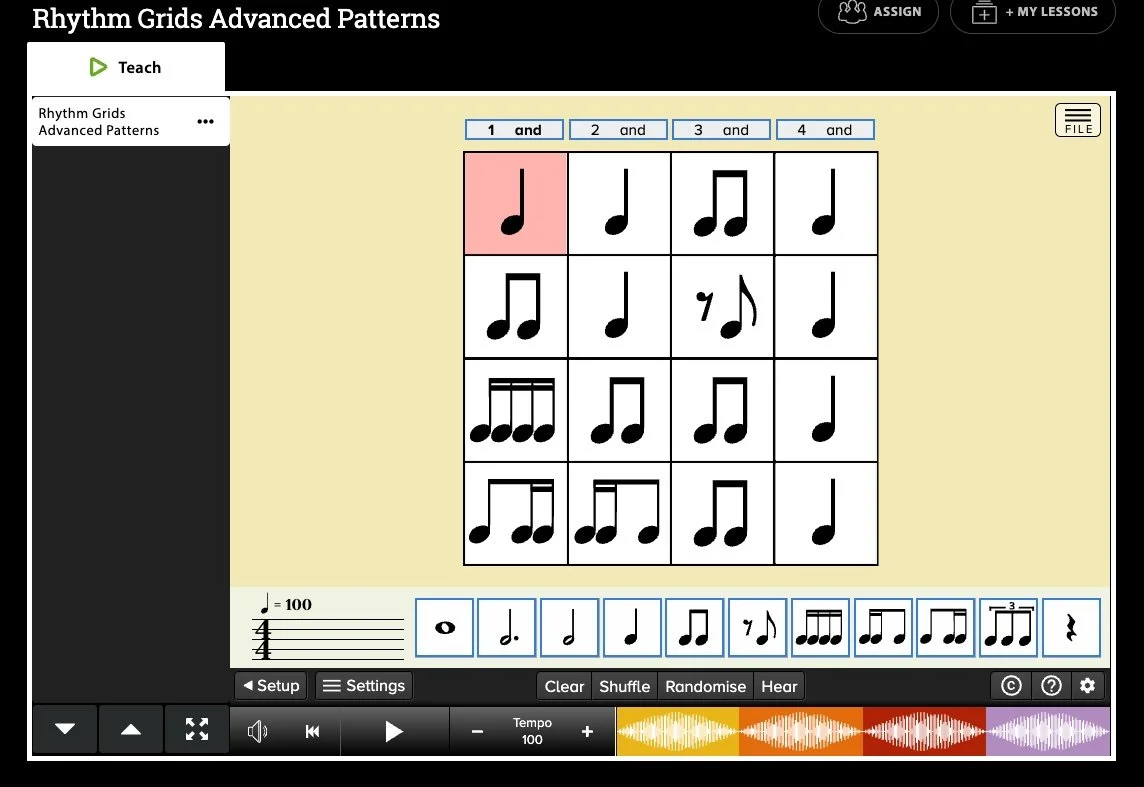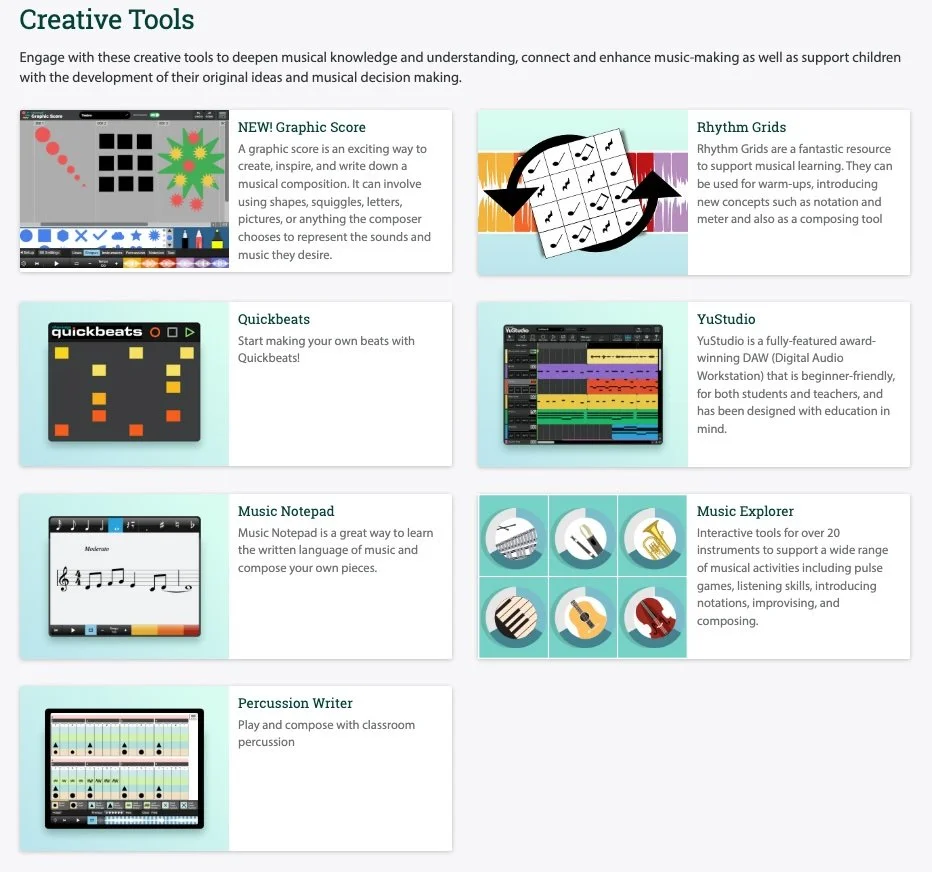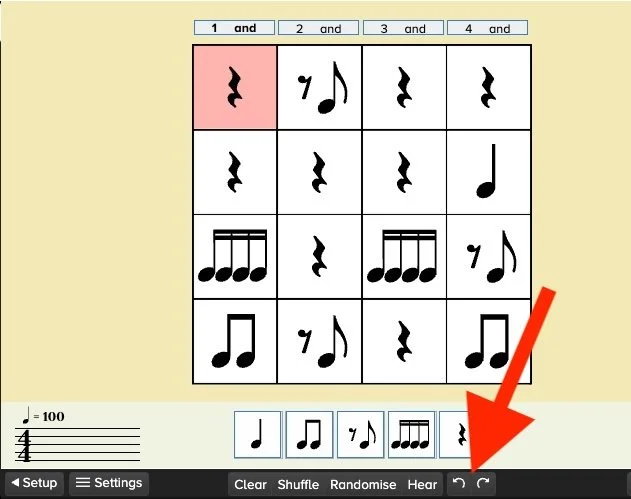Tool: Rhythm Grids in MusicFirst Elementary
Elementary music classrooms are spaces that are often full of movement, sound, and budding creativity. One of the very cool tools in the collection of Creative Tools within MusicFirst Elementary that utilizes all of these elements is the Rhythm Grids tool. One of the best parts of teaching elementary music is watching students light up when they feel the music come to life. Rhythm is often the first entry point for that, and Rhythm Grids in MusicFirst Elementary is a fantastic tool for helping students not only feel rhythm but see it, create it, and truly understand it. If you're looking for a dynamic way to build rhythmic literacy while supporting creativity, collaboration, and musical expression, Rhythm Grids is your new best friend. The best part? This tool in included with every implementation of MusicFirst Elementary!
Rhythm Grids is one of seven creative tools within MusicFirst Elementary. It is an intuitive and visually engaging resource that lets students interact with rhythmic patterns in real time. First, you select either Simple or Advanced Rhythmic patterns. Next, you select a time signature — I’d recommend starting with 4/4 — and then build rhythmic patterns using “blobs,” “sticks,” or standard notation, depending on your students’ age and experience. What’s great about this is the pedagogical progression: blobs are perfect for younger learners just starting to grasp rhythmic values, while sticks and notes move them closer to traditional reading.
This tool supports a range of musical goals: warm-ups, rhythm reading, improvisation, composition—you name it. With the addition of backing tracks in various styles (think rock, fusion, even a metronome click if you prefer), students get a sense of groove and meter that makes these rhythms feel musical, not just mechanical. That’s a big deal. There’s an emphasis on the strong beat in the backing tracks, which helps students internalize pulse and phrase naturally.
Now, let’s talk teaching strategies. One of the simplest and most effective ways to use Rhythm Grids is as a full-class clapping or body percussion activity. Build a grid, press play, and let students clap, stomp, snap, or play along. You can assign individual lines of the grid to small groups or soloists, encouraging them to listen and lock in with others—what a great way to introduce texture and layering! This is ensemble training in disguise, and it’s all happening in a tech-friendly, low-prep format. My absolute favorite feature is the rotate button. This rotates the grid clockwise or counterclockwise to change the patterns. Your students will LOVE it. You can also click the Randomise button or Shuffle to generate brand new patterns.
You can use Rhythm Grids to reinforce music literacy. Ask students to match sounds to symbols—have them listen to a rhythm you perform and identify which line it came from. As they develop, you can flip the script: challenge them with aural dictation. Play or perform a rhythm and have them notate it using the printed Rhythm Grid templates. You’ll be amazed at how quickly they start to make connections between what they hear and what they see.
One of my favorite applications is using Rhythm Grids to build question-and-answer phrases. Create a one-measure rhythm as the “question” and ask students to respond with their own “answer.” It’s improvisational, it’s musical, and it gets them thinking like composers. Early on, the answers may be chaotic, and that’s okay—that’s what creativity often looks like!
Let’s not forget the "Symbols" mode. This lets students define their own meanings for each icon—maybe a triangle means a hand clap, a circle is a voice sound, and a star is a shaker. Perhaps what I love most about Rhythm Grids is that it adapts to you and your students. Once you’ve dragged in your rhythms to the grid, you can slow things down, loop patterns, randomize, shuffle, even rotate the grid for some fresh inspiration. And when your students are ready for more complexity, Rhythm Grids Advanced brings in longer and shorter note values, triplets, and more intricate rhythmic combinations.
If you're an elementary music educator looking to integrate technology in meaningful, musical, and student-centered ways, Rhythm Grids is a must have tool for teaching rhythm. It’s not just a tech add-on—it’s a big part of what makes the MusicFirst Elementary curriculum so engaging. Give it a try. Your students will love it—and you will too. You can access Rhythm Grids right now by signing up for a FREE 30 day trial HERE. Enjoy!





